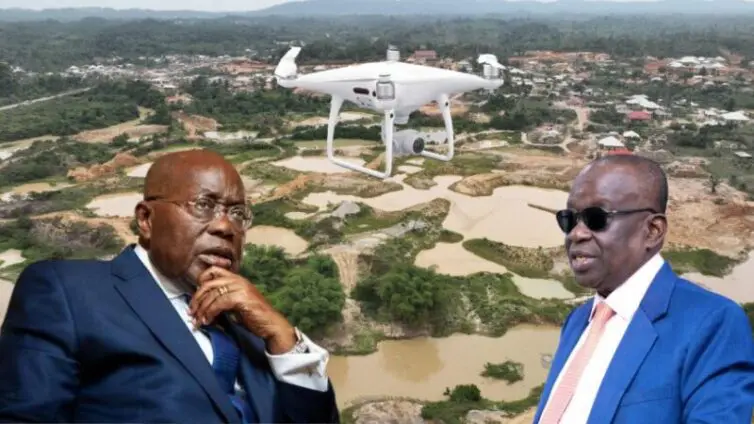As wanton illegal mining continues to raise alarm in almost every sphere of Ghanaian life, key government agencies are using national security to evade questions about the whereabouts and use of 200 costly drones bought to track down illegal miners and halt their operations.
The drones were acquired in 2018 for three million US dollars, according to the then Minister of Lands and Natural Resources, John-Peter Amewu.
The then Secretary of the Inter-Ministerial Committee on Illegal Mining (IMCIM), Charles Bissue, in July 2018 acknowledged the arrival of the drones.
“The drones have arrived in the country to support the president’s position that we have to do mining responsibly,” he said in interviews with the media. “Each district will have one, and the regional coordinating councils will have one so they can monitor the district mining committees. There is going to be a monitoring center at the office of the president too.”
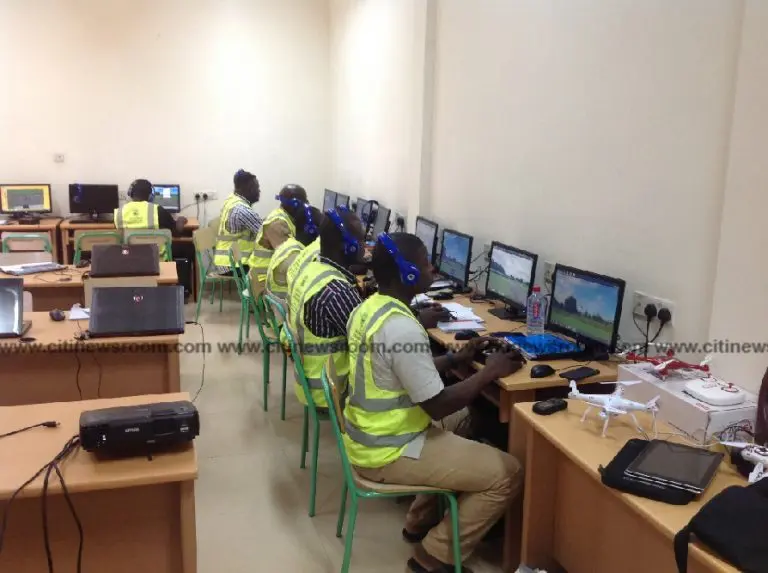
Numerous images of the monitoring center were taken and published, but there was no photographic evidence to prove that the drones were actually in the country – as is usually done when the government acquires fleets of vehicles or other machinery. Only three drones were seen in the images taken of the monitoring centre. It took a month after Mr Bissue’s comments for the chairman of the IMCIM, Prof. Kwabena Frimpong-Boateng, to provide evidence that some drones had actually arrived in the country. Even so, only three of the drones (out of a total of 200) were put on display.
“These are some of the drones that we have been able to acquire,” Prof. Frimpong- Boateng, who was also at the time the Minister for Environment, Science and Technology, said. “One has thermal sensors that will allow us to deploy in the night because we had a situation where the team did not operate in the night because they did not have night vision equipment.”
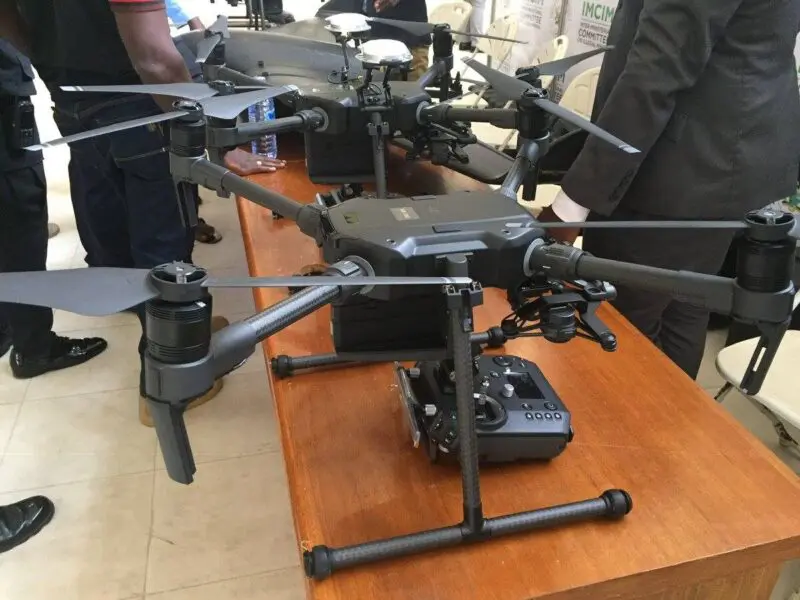
Hopes were raised only to be dashed as it appears the drones were hardly ever used as part of the fight against illegal mining.
For example, Erastus Asare Donkor of JoyNews, who has extensively investigated illegal mining and has on numerous occasions toured with the illegal mining taskforce (Galamstop), says he hardly saw a drone in use.
“I was the only journalist who was on the team. And at that time, they (the taskforce) were asking whether they can get the drones because where we were going, they needed to fly the drones to know where the people [illegal miners] were,” Mr Donkor says. “There was no response from Frimpong-Boateng. If there were drones, he would have given it to them.”
The only time he said he saw a drone being used was the two weeks he spent with the Galamstop Taskforce in 2019.
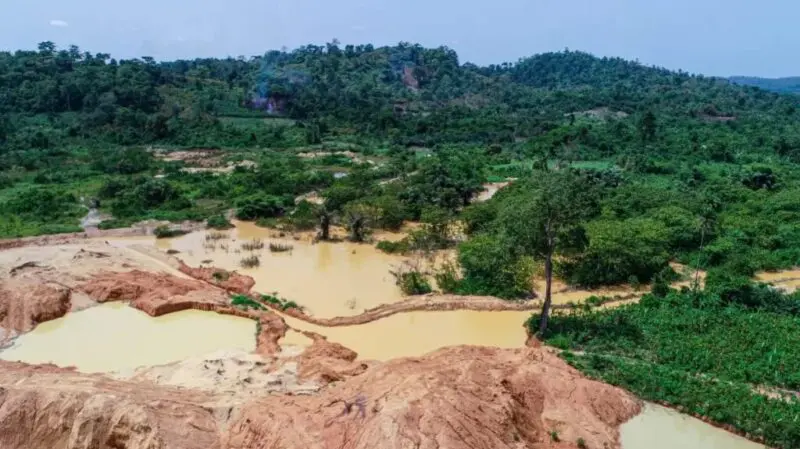
He recalls that the drone, a white Phantom 4 Pro, was used by the taskforce at Manso-Tontokrom in the Amansie South District of the Ashanti Region and in the Taabosere section of the Upper Wasaw Forest Reserve in the Western Region.
“I was on the field with the team at the time they said they had bought drones. I saw one drone being used. That was the only drone I saw them use. Aside that, I never saw any other drones,” he says.
Although government communicators have consistently mentioned drones as part of the intervention to fight illegal miners and ward them off the country’s forests, the Forestry Commission recently announced that illegal miners have destroyed at least 34 forest reserves.
The commission’s data also shows that almost 5,000 hectares of forest cover have been destroyed.
As of 2017, the Forestry Research Institute pegged the cost of reclaiming a hectare of land degraded by illegal mining at GH₵ 225,000.
When The Fourth Estate reached out to Prof. Frimpong-Boateng, he declined to speak on the issue. But he pointed out that after the IMCIM was dissolved, the National Security Ministry took possession of the drones, without indicating the exact number of drones handed over to the National Security Ministry.
However, a high-ranking official of the national security ministry told The Fourth Estate off record that he doesn’t know about the existence of the drones.
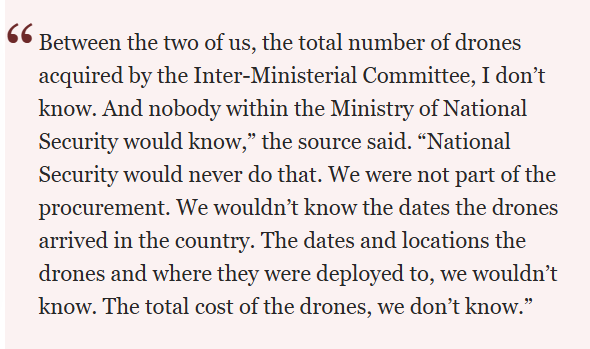
As wanton illegal mining continues to raise alarm in almost every sphere of Ghanaian life, key government agencies are using national security to evade questions about the whereabouts and use of 200 costly drones bought to track down illegal miners and halt their operations.
The drones were acquired in 2018 for three million US dollars, according to the then Minister of Lands and Natural Resources, John-Peter Amewu.
The then Secretary of the Inter-Ministerial Committee on Illegal Mining (IMCIM), Charles Bissue, in July 2018 acknowledged the arrival of the drones.
“The drones have arrived in the country to support the president’s position that we have to do mining responsibly,” he said in interviews with the media. “Each district will have one, and the regional coordinating councils will have one so they can monitor the district mining committees. There is going to be a monitoring center at the office of the president too.”

Numerous images of the monitoring center were taken and published, but there was no photographic evidence to prove that the drones were actually in the country – as is usually done when the government acquires fleets of vehicles or other machinery. Only three drones were seen in the images taken of the monitoring centre. It took a month after Mr Bissue’s comments for the chairman of the IMCIM, Prof. Kwabena Frimpong-Boateng, to provide evidence that some drones had actually arrived in the country. Even so, only three of the drones (out of a total of 200) were put on display.
“These are some of the drones that we have been able to acquire,” Prof. Frimpong- Boateng, who was also at the time the Minister for Environment, Science and Technology, said. “One has thermal sensors that will allow us to deploy in the night because we had a situation where the team did not operate in the night because they did not have night vision equipment.”

Hopes were raised only to be dashed as it appears the drones were hardly ever used as part of the fight against illegal mining.
For example, Erastus Asare Donkor of JoyNews, who has extensively investigated illegal mining and has on numerous occasions toured with the illegal mining taskforce (Galamstop), says he hardly saw a drone in use.
“I was the only journalist who was on the team. And at that time, they (the taskforce) were asking whether they can get the drones because where we were going, they needed to fly the drones to know where the people [illegal miners] were,” Mr Donkor says. “There was no response from Frimpong-Boateng. If there were drones, he would have given it to them.”
The only time he said he saw a drone being used was the two weeks he spent with the Galamstop Taskforce in 2019.

He recalls that the drone, a white Phantom 4 Pro, was used by the taskforce at Manso-Tontokrom in the Amansie South District of the Ashanti Region and in the Taabosere section of the Upper Wasaw Forest Reserve in the Western Region.
“I was on the field with the team at the time they said they had bought drones. I saw one drone being used. That was the only drone I saw them use. Aside that, I never saw any other drones,” he says.
Although government communicators have consistently mentioned drones as part of the intervention to fight illegal miners and ward them off the country’s forests, the Forestry Commission recently announced that illegal miners have destroyed at least 34 forest reserves.
The commission’s data also shows that almost 5,000 hectares of forest cover have been destroyed.
As of 2017, the Forestry Research Institute pegged the cost of reclaiming a hectare of land degraded by illegal mining at GH₵ 225,000.
When The Fourth Estate reached out to Prof. Frimpong-Boateng, he declined to speak on the issue. But he pointed out that after the IMCIM was dissolved, the National Security Ministry took possession of the drones, without indicating the exact number of drones handed over to the National Security Ministry.
However, a high-ranking official of the national security ministry told The Fourth Estate off record that he doesn’t know about the existence of the drones.
Between the two of us, the total number of drones acquired by the Inter-Ministerial Committee, I don’t know. And nobody within the Ministry of National Security would know,” the source said. “National Security would never do that. We were not part of the procurement. We wouldn’t know the dates the drones arrived in the country. The dates and locations the drones and where they were deployed to, we wouldn’t know. The total cost of the drones, we don’t know.”
For close to two years, from October 2022 to May 2024, The Fourth Estate persistently sought to find out the whereabouts of the drones from three ministries and the Office of the President but got no answers.
Parliament’s Defence and Interior Committee’s reaction
The Ministry of Lands and Natural Resources and the Ministry of Environment, Science, Technology, and Innovation had no idea where the drones were. The Ministry of National Security never responded directly to The Fourth Estate’s request under Right to Information provisions. The Right to Information Commission, however, told The Fourth Estate that the Ministry of National Security had informed the commission that the release of the requested information would threaten the security of the state.
And so, the questions linger: How many drones were acquired, where are they now and how are they being used in the national effort to clamp down on illegal mining?
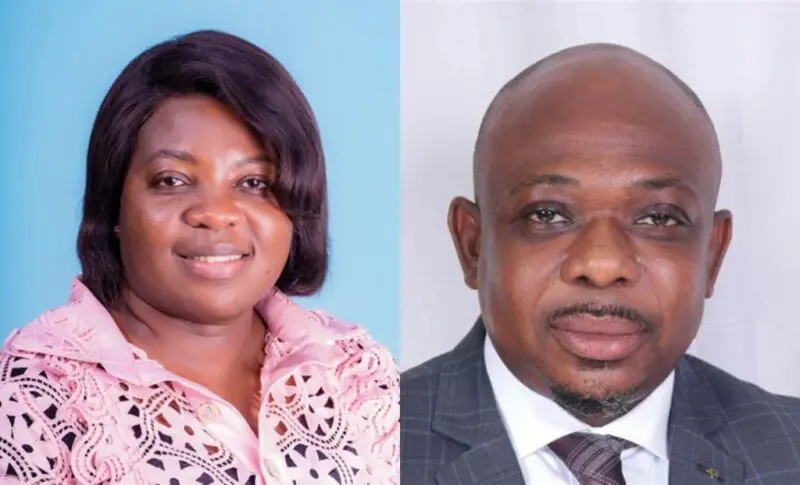
A former deputy chairperson of the Defence and Interior Committee in Parliament, Ophelia Mensah, told The Fourth Estate that the Committee was not privy to the transaction to buy the drones.
“The [only] transaction I know was to get fighter jets for the military,” she says. “But these drones [to] fight against galamsey, no, I’m not aware of it.”
The ranking member for the Committee, James Agalga, corroborated what Ms Ophelia said.
“I can confirm that it never came to Parliament and it is therefore worth investigating,” he says.
Honorary vice president of IMANI Africa, Bright Simons, also has doubts about the implementation of the initiative to use drones in the fight against illegal mining.
“Based on our discreet enquiries in the security services, we can confidently say that the drones and their supporting control room infrastructure and software were not even properly commissioned and no one can provide a detailed inventory or even an account of where they are now,” he says. “We can safely conclude that the entire approach has now been abandoned and the project is dead in the water.”
Mr Simons described the government’s decision to use drones to fight illegal mining as an “utter failure,” accusing the Akufo-Addo administration of deliberately hiding all the contracts about the purchase of the drones under the folds of national security.

Another person who has raised doubts about the supposed acquisition of the drones, is the founder of the Media Coalition Against Illegal Mining, Dr Kenneth Ashigbey.
He has many questions: “If we have the drones, how come we don’t know when people get into the forest reserves? How come we don’t have drone footage of Akonta Mining in the Tano Nimiri Forest Reserve? So, where are the drones?”
Source: myjoyonline.com




